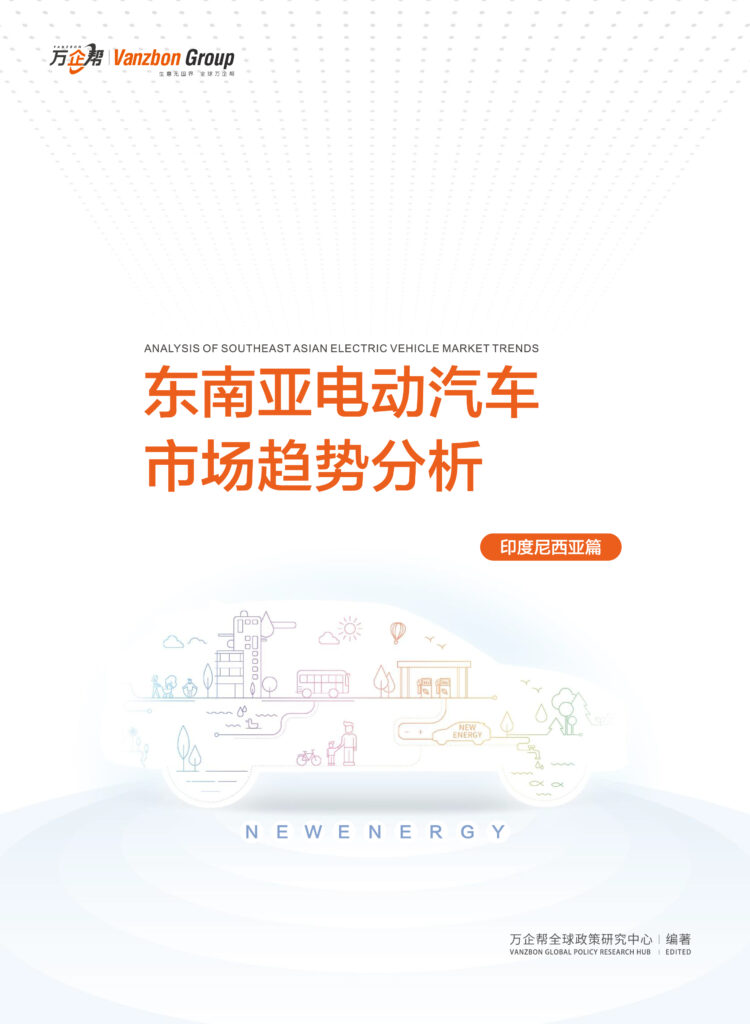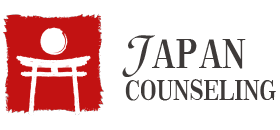In the Japanese business environment, etiquette is not only a code of conduct, but also the foundation for building trust and long-term cooperative relationships. Japanese corporate culture is centered on courtesy, respect, and cooperation, and emphasizes order and social harmony. In this context, following the correct etiquette can not only demonstrate personal professionalism, but also enhance the other party’s goodwill and trust in the company. Whether it is bowing, exchanging business cards, or seating arrangements, these seemingly subtle behaviors have a profound impact on the effectiveness of business exchanges.
For entrepreneurs and managers who want to enter the Japanese market, it is important to understand and master these business etiquettes. This guide is designed to help them cope with Japan’s unique business culture and provide practical tools and techniques to ensure that they can demonstrate professionalism and cultural respect when dealing with Japanese partners, thus laying the foundation for long-term business success.
Greetings
In Japanese business situations, greeting is a key step in building trust and respect, and bowing is the most representative form of etiquette. The angle and strength of the bow depend on the status of both parties and the specific occasion. Generally speaking, when facing superiors or customers, the angle of the bow should be about 30 degrees to show respect. When facing colleagues or friends, a shallower 15-degree bow can be chosen. In addition, in formal occasions, the bow should be slow and steady, showing a humble attitude, rather than being hasty or casual.
Language is also an important way to express respect. In Japan, the use of honorifics is a necessary means of showing courtesy to the other party. In the first meeting or formal occasions, common business greetings include “よろしくお願いします”, which means “please take care of me”. This sentence is not only a polite expression, but also an expectation for future cooperation. When saying goodbye, “お世話になりました” (Thank you for your care) is also a common polite expression to express gratitude for past cooperation.
Scenario simulation: When you meet a client for the first time, it is appropriate to bow at a standard 30-degree angle and greet them with “初めまして、よろしくお願いします” (It’s our first meeting, please take care of me). If you meet them again, you can bow slightly and say “いつもお世話になっております” (Thank you for your care). This detailed greeting not only demonstrates etiquette, but also helps you build a closer business relationship.
Business Card Exchange
In Japanese business culture, exchanging business cards is a very formal and important etiquette, usually occurring at the beginning of a meeting, rather than at the end of a conversation as is common in Western business practices. Business cards are not only a carrier of personal information, but also a symbol of identity and status. Therefore, it is crucial to ask for the exchange of business cards at the right time. Usually, the ideal time to ask for the exchange of business cards is after both parties have introduced themselves, or before the formal conversation begins. This shows that you value the other party and lays a good foundation for subsequent communication.
When exchanging business cards, you should hand them over with both hands and make sure the front of the card is facing the other person so that the other person can clearly see your name and position. When handing over the business card, bow slightly and say “よろしくお願いします” (Please take care of me) to show your humility. When receiving a business card, you also need to receive it with both hands and read the information on the card carefully. It is especially important to note that you should not put the other person’s business card into your pocket immediately, as this will be seen as a sign of disrespect. Instead, you should carefully place the business card in a business card holder or place it in the front of the table during the meeting to show your respect for the other person’s status.
Management of business cards after they are exchanged is equally important. After receiving a business card, be sure to keep it properly, especially in formal situations, and never fold or damage it. During a meeting, place the business card on the table for easy reference, and make sure not to put the business card away outside the business card holder before the meeting is over, which shows your respect and attention to the other party.
Seating Arrangement
In Japanese business etiquette, seating arrangements reflect respect for identity and status, so it is important to correctly understand the concepts of “upper seat” and “lower seat”. Generally, “upper seat” refers to the most distinguished seat, usually away from the door and facing the main seat of the room, while “lower seat” is closer to the door or less conspicuous. Seating arrangements are not only reflected in meeting rooms, but also involve seat allocations at business dinners and transportation. In these occasions, high-ranking leaders or important customers should be arranged in the “upper seat” to show respect.
In a meeting room, the seating arrangement is determined by the position of the attendees. Usually, customers or leaders are arranged to sit at the “upper seat” farthest from the door, while people within the company sit at the “lower seat” near the door. The meeting host usually sits near the screen or whiteboard to facilitate the process of the meeting. This seating arrangement is not only a respect for the customer, but also the key to ensuring a smooth meeting process.
Seating arrangements for business meals also need to strictly follow etiquette. Generally speaking, the host or customer should sit in the “upper seat” facing the main entrance of the restaurant, while the organizer or subordinates should sit in a relatively inconspicuous position. During the meal, the order of toasting and serving dishes should also correspond to the seating order. Elders or superiors usually occupy a dominant position throughout the meal. Therefore, when arranging seats, the status and relationship of both parties must be considered to ensure that every participant feels respected.
There are also strict rules for seating arrangements when riding in public transportation. In taxis or reception cars, the most distinguished passengers should sit on the right side of the back row, as this is the safest and most convenient position. The organizer or driver usually sits on the front passenger seat or on the left side of the back row. This arrangement can reflect the meticulous care for customers or superiors.
Scenario simulation: When you meet with a client in a conference room, you should guide the client to sit in the seat farthest from the door, and let the leader sit next to him. If it is a business dinner, you can arrange a seat for the client by the window or facing the main door, and sit opposite yourself. When taking a taxi, you should take the initiative to open the back door, invite the client to sit on the right side of the back seat, and sit on the co-pilot or left side of the back seat. These detailed seating arrangements can not only reflect your familiarity with business etiquette, but also effectively promote smooth and pleasant business communication.
Business dining etiquette
In Japan, business meals are not only an opportunity to dine, but also an important occasion to establish business relationships. The etiquette of ordering dishes and toasting is very particular, and it is necessary to show respect and consideration for the other party. When ordering dishes, as the host, you should avoid ordering too expensive dishes, so as not to put pressure on the guests and to control the budget. At the same time, you can ask the guests about their dietary preferences to ensure that the dishes are to their taste. When toasting, it is usually initiated by the host or the person with the highest status. When raising the glass, the toasting glass should be lower than the other party’s glass to show humility and respect.
Some details when dining should also not be overlooked. First, when using chopsticks, you should avoid sticking chopsticks in rice, as this is a taboo related to funerals. Secondly, do not use chopsticks to pass food to each other, which is also a disrespectful behavior that needs to be avoided. When drinking, it is polite to pour wine for others instead of yourself. If you notice that the other person’s glass is empty, it is a courtesy to fill it for them, but do not fill it for yourself. In Japan, drinking usually requires waiting for everyone to raise their glasses in greeting before taking the first sip, so be patient and wait for the toast to end.
Scenario simulation: At the beginning of a business meal, you should first ask the guests if they have any dietary preferences, and then order a few moderate dishes. Then, the toast is usually initiated by you, raising your glass and saying “Kanbei” (cheers), while making sure your glass is slightly lower than the other person’s glass. During the meal, be careful not to stick your chopsticks into the food, and try to avoid rude actions. At the end, you can raise your glass again to thank the other person for his company, and express your expectations for future cooperation when appropriate. Through these meticulous etiquette, you can not only make the entire business dinner go smoothly, but also deepen your relationship with customers or partners.
Meeting etiquette
In a Japanese business environment, meetings are both opened and closed with a certain level of etiquette that demonstrates respect and professionalism to the attendees. At the beginning of a meeting, the host usually introduces himself/herself and briefly explains the objectives of the meeting. If new attendees join, it is essential to introduce each of them one by one. When introducing yourself, you should state your name, position, and company briefly and clearly, and express your gratitude to the attendees. For example, you could say, “Thank you for taking the time to attend the meeting today.” At the end of the meeting, it is also necessary to end with a thank you speech to thank the other party for their time and cooperation, and to lay the foundation for future cooperation.
During a meeting, be sure to be polite in your expressions. In Japan, business conversations are usually indirect, so it is important to avoid directly rejecting the other party’s suggestions. If you have doubts about a proposal, you can use a more tactful expression, such as “これはいご訴ですが、もう少し検樎したい點があります” (This is a good suggestion, but there are some areas that we need to consider further). This expression will make the other party feel respected and leave room for further discussion.
In addition, etiquette tips for meetings should not be ignored. First of all, dressing appropriately is a sign of respect for the other party, and formal business attire is usually preferred. Being punctual and keeping appointments is also crucial. Japanese culture attaches great importance to the concept of time, and being late may be seen as disrespectful. Maintaining a professional image is not only reflected in words and deeds, but also in details, such as maintaining a good sitting posture during meetings, maintaining eye contact with participants, and listening attentively.
By following these meeting etiquettes, you can not only ensure the smooth progress of the meeting, but also leave a good impression on the participants and further promote the deepening of business cooperation relationships.
Gift Exchange
In Japanese business culture, gift exchange (handmade souvenirs) is one of the important ways to express gratitude and respect. However, the timing of gift giving and the type of gift you choose must be careful. Generally, it is appropriate to prepare a gift when you first meet someone, celebrate a special business cooperation success, or visit the other party’s company. The gift does not need to be too luxurious, but it should reflect the thought and respect for the other party. It is worth noting that gift giving should not be too frequent, otherwise it will make the other party feel burdened.
When choosing a gift, it is important to avoid inappropriate gifts. First, the number “four” is considered unlucky in Japan because it is pronounced similarly to “death”, so four-piece sets or gifts with “four” should be avoided. Secondly, do not give items that symbolize separation, such as knives. In addition, the packaging of the gift should also be neat and beautiful. Usually, Japanese people attach great importance to the appearance of the gift, not just the intrinsic value. Depending on the occasion, local specialties or high-quality snacks, tea, etc. are good choices, which are not too expensive and can convey sincere feelings.
There are also many etiquettes for handing over gifts. You should hand over the gift with both hands, with a slight bow, and express your appreciation, such as “つまらないものですが、どうぞ” (This is a little gift, please accept it). When handing over a gift, it is usually placed with the package facing the other person so that it is easier for them to receive it. When accepting a gift, you should also take it with both hands, express gratitude and humility, and never open the gift immediately after receiving it, as this may be considered impolite to rush to judge the value of the gift.
Scenario simulation: At the end of a meeting with a client, you prepare a local specialty as a gift. You smile and say, “This is a Japanese specialty, please accept it,” and hand the gift to the other party with both hands. The other party holds both hands.
Response to Special Situations
In business situations, it is key to avoid being late, especially in Japan, where punctuality is a basic etiquette. However, if you are late due to force majeure, it is crucial to apologize promptly and sincerely. When you are late, you should apologize to the other party as soon as you meet them, using concise and polite language, such as “遅れてしまい、申し訳ありませんでした.” (I am very sorry that I am late). At the same time, you can briefly explain the reason for being late, but you should not over-explain so as not to appear insincere. In addition, appropriately offering remedial measures, such as being more efficient in the subsequent trip, shows your positive attitude and respect for the other party’s time.
In business negotiations, rejecting the other party’s request is a very sensitive matter, especially in Japanese culture, where a direct “rejection” may be regarded as impolite. Therefore, when expressing a disagreement or rejecting a request, a more tactful way should be adopted. For example, you can use “難しいかもしれませんが、もう少し検討してみます” (This may be a little difficult, but we will consider it further) to express refusal or hesitation. This tactful way can ease the other party’s emotions while leaving room for subsequent communication. If you need to reject a proposal directly, you can express your gratitude first and then explain the difficulties, always being polite and respectful.
Scenario simulation: You are ten minutes late due to traffic problems. After meeting, you first bow and say, “I’m sorry to have kept you waiting for so long,” and then briefly explain the reason. The other party accepts your apology and the meeting can proceed smoothly. On another occasion, the client made an unrealistic request, and you tactfully replied, “Your proposal is good, but it may be difficult at the moment,” and thanked the other party for their understanding. Through this kind of meticulous communication, you can effectively maintain the relationship between the two parties while maintaining a professional image.
Cultural Misconceptions and Common Mistakes
In the Japanese business environment, foreigners tend to overlook or misunderstand some details of etiquette, and these misunderstandings may affect the development of business relationships. For example, a common mistake foreigners make is to casually hand over or accept business cards. In Japan, business card exchange is a very formal etiquette, which requires both hands to hand over and receive, and the business card should be facing the other party. It is considered disrespectful to hand over a business card with one hand or put it in your pocket. In addition, many foreigners will directly use a handshake when they meet for the first time, ignoring the etiquette of bowing. Although handshakes are widely used worldwide, in Japan, bowing is more respectful to the other party. To avoid misunderstandings, it is best to combine bowing and handshakes, or choose the appropriate method based on the other party’s reaction.
Another common etiquette misconception is the difference in time perception. In Japan, being on time is a very important cultural norm, and arriving even a few minutes early is a way of showing respect. On the contrary, being late may be seen as disrespectful to the other party. When planning business activities, foreigners must stick to a strict schedule and be prepared for possible unexpected situations.
To avoid embarrassment and misunderstandings, it is crucial to understand cultural differences. First, keeping an open mind and observing and imitating the behavior of locals can help you avoid many unnecessary faux pas. If you are unsure whether a certain behavior is appropriate, it is a safe choice to ask or refer to local colleagues. Also, be sure to avoid being loud in public or using overly casual language in formal situations, as the Japanese business environment places great emphasis on restraint and politeness.
Scenario simulation: You meet an important client at a meeting. When the client hands you a business card, you immediately take it with both hands, carefully check the information on the card, and then put the card on the front of the table instead of putting it in your pocket. This meticulous etiquette not only avoids potential misunderstandings, but also shows your understanding and respect for cultural details. Similarly, when attending a business meeting, you arrive a few minutes early and are fully prepared for the meeting. These details help you establish a professional and polite image in Japanese business situations.
Conclusion
In the Japanese business environment, etiquette is not only a formality, but also a bridge to build trust and respect. By mastering Japanese business etiquette, you can not only avoid unnecessary cultural misunderstandings, but also show respect for customers and partners in details. These etiquettes, whether in the greetings at the first meeting, the exchange of business cards, the seating arrangement, or the details of the business dinner, can greatly enhance the business relationship between each other. This meticulous respect and courtesy will help your company establish a good image in the Japanese market, thereby promoting closer and more successful cooperation.
However, understanding etiquette is only the first step. The real value lies in practice. Through continuous application in actual business situations, you will gradually master these etiquette details and integrate them into your daily work process. Etiquette is not just a code of conduct, it is a long-term business asset that can help you build deeper connections in the Japanese market and win greater trust and respect. We encourage you to continue to learn and explore more Japanese cultural details, further enhance your understanding and flexible application of these etiquette, and lay a solid foundation for the success of your business in Japan.








